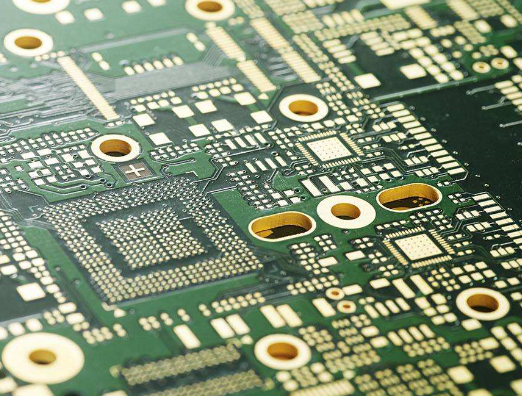In the medical field, medical protective equipment is crucial to ensure the safety of medical staff and the health of patients. As the core component of the equipment, medical PCBs show many significant advantages in medical protective equipment compared to ordinary PCBs.

1. High Performance and High Reliability
Medical protective equipment often requires long-term stable operation, demanding extremely high performance and reliability from PCBs. Medical PCBs use high-quality substrates and advanced manufacturing processes to deliver excellent electrical performance. With precise circuit design, they ensure stable, fast, and low-loss signal transmission, enabling equipment to operate reliably even in complex electromagnetic environments.
For example, in a smart protective mask, the PCB must process real-time data from various sensors, such as respiratory and environmental monitoring sensors. Medical PCBs ensure the accurate transmission and processing of this data, providing medical staff with timely and reliable information feedback.
Furthermore, medical PCBs maintain stable performance under harsh conditions such as high temperature, humidity, and vibration. They possess excellent anti-aging and anti-fatigue capabilities, offering a long service life. This reduces equipment failures and maintenance frequency, ensuring the continuity of medical protection efforts.
2. Stringent Safety and Compliance Standards
The medical industry has extremely rigorous safety requirements. Medical PCBs must comply with relevant international standards and regulations, such as ISO 13485. These certifications ensure that medical PCBs follow strict specifications during design, production, and testing to reduce potential risks.
When selecting materials for medical PCBs, priority is given to using environmentally friendly materials that are non-toxic, harmless, and non-corrosive to avoid causing harm to medical staff and patients. During the production process, pollutant emissions are strictly controlled to reduce the impact on the environment. In addition, medical PCBs feature perfect electrical insulation and grounding designs, effectively preventing electrical safety issues such as leakage and short circuits, thereby ensuring safe equipment operation.
3. High Precision and Miniaturized Design
As medical protective equipment develops towards intelligence and portability, higher requirements are placed on the accuracy and size of PCBs. Medical PCBs use advanced manufacturing technologies, such as laser drilling, micro-hole technology, and high-precision circuit etching, which can achieve the processing of fine circuits and tiny apertures to meet the needs of high-density integration.
For example, in wearable medical protective equipment, medical PCBs can integrate numerous functional modules in a very small space, making the equipment smaller and lighter, making it easier for medical staff to wear and use it for a long time without affecting the performance of the equipment. This high-precision and miniaturized design also helps to improve the aesthetics and comfort of the equipment and enhance the user experience of medical staff.
4. Excellent Compatibility and Scalability
Medical protective equipment usually needs to connect and interact with a variety of external devices and systems. Medical PCBs have good compatibility and can be easily and seamlessly connected with various sensors, display screens, communication modules and other devices to achieve diversified equipment functions. At the same time, the scalability of medical PCB is fully considered during its design, and sufficient interfaces and space are reserved to facilitate the subsequent functional upgrade and expansion of the equipment according to actual needs.
For example, in protective isolation cabin equipment, new detection modules or communication modules can be added through the reserved interfaces of medical PCB according to the needs of epidemic prevention and control, so as to enhance the protection and monitoring capabilities of the equipment and adapt to the ever-changing medical needs.
5. Strong Anti-Interference Capability
The working environment of medical protective equipment is complex and is susceptible to various electromagnetic interferences, which may affect the normal operation of the equipment. Medical PCBs are designed with optimized trace layouts and shielding technologies to deliver robust EMI resistance. It can effectively suppress the impact of EMI on the equipment, while reducing the electromagnetic radiation generated by itself to avoid interference with other nearby medical equipment.
For example, in medical environments such as operating rooms, multiple medical devices are running at the same time. The anti-interference ability of medical PCBs can ensure the stable operation of protective equipment, safeguarding the safety of surgery and the health of medical staff.
In summary, with their high performance and reliability, stringent safety and compliance, high precision and miniaturization, excellent compatibility and expandability, and strong anti-interference capabilities, medical PCBs have become an indispensable component of medical protective equipment. They provide powerful support for efficient and safe medical protection operations.
HoYoGo is an international, professional and reliable medical PCB manufacturer. We have obtained ISO13485 certification. We consistently require our production, engineering, and procurement teams to meet the highest industry standards. We have long-term experience and professional process knowledge in medical PCB assembly. If you have relevant needs, you are welcome to send us an inquiry.